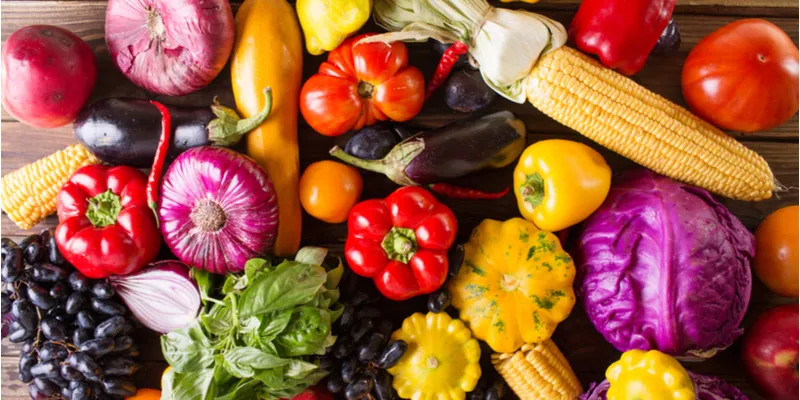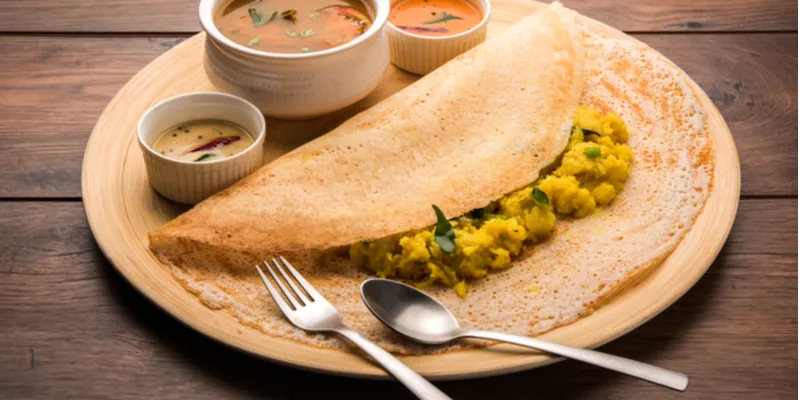Be a food detective: Find the right meal combinations for good health
How do you combine foods in the right way for great health? Check out these principles of food combining that will help you on your health journey in 2020
Food combining is an art, and has been researched in Ayurveda for a very long time. One of the reasons for this vast study is due to the fact that your gut is integral to health, and what happens within your stomach is a big part of your well-being.
Combining foods, the right way, helps your digestive process, and encourages better absorption of all nutrients.
Food combining is all about improving digestion!

The right food combinations will lead to good health
One of the most important facts that you need to remember is that your health can be improved greatly by improving your digestion. If your digestion is optimal, then you can avoid developing symptoms such as bloating, acidity and challenges with detoxification.
These problems could occur if your meal has too much starch or sugar, and is heavy in carbohydrates. These foods cause fermentation within your system leading to an increase in pathogenic bacteria, which impairs health. All of this can stress your liver and increase acidity. If you want great health, begin by combining your food correctly.
What to keep in mind when you think of food combinations
If you want food to help live a healthy life, there are some key concepts to keep in mind, which are very simple to execute.
Keep these tips in mind to make your meals much easier to plan and execute...

Eat fruit an hour before your meals
- Always eat fruit only thirty minutes or an hour before your meals. Combining fruits with a heavy meal that has fats and proteins is hard to digest and stresses your digestive system. When you eat fruit before your meal, you support digestion, as fruit behaves like a prebiotic. You will also not have a sugar crash post the consumption of fruit since you have eaten with a balanced meal.
Combine animal proteins with non-starchy vegetables like broccoli, cabbage, celery, mushrooms, eggplant, leafy greens, onions, peppers, tomatoes and beans. This is because non starchy vegetables take time to digest, and combine well with animal proteins which also takes time to digest.
- See that your meal is not heavy in starch or carbohydrates. It is common to combine high starch and starchy grains with inadequate fats and protein. Make sure that you have a palmful of vegetables, half a palmful of protein, half a palmful of a non-starchy grain and one thumb size of healthy fats. This is much easier to do than be counting calories and macros.
If you want to combine fruits with your meal because you do not have any other time in the day that works for you, then combine it in such a way that the fats and proteins are broken down and easier to digest, such as a smoothie.

Colourful foods create much more balanced and stable blood sugar levels in the body
- Always make sure that every meal has some colourful plant foods, from different vegetables. This creates much more balanced and stable blood sugar levels. Combining some fats also works remarkably to stabilise blood sugar. It is common for people on low fat diets to feel hungry frequently and eat often. Usually this points to inadequate fat and protein in the diet, and not hunger itself.
Here are some great food combinations:

Masala dosa with sambar and chutney is an ideal meal
- If you like a hot Indian meal, make sure that you get fat, fibre, protein and colour. Most cuisines take this into consideration, and the problems occur when the elements of a traditional meal are left out for convenience sake. For instance, if you eat idlis, then combine it with sambar full of vegetables and enough coconut chutney. If you eat a masala dosa, never leave out the chutney and the sambar. Eating the potato and the dosa gives you empty starch. In fact, it is ideal if you add some vegetables on the side as well.
If you do love your rice, go ahead and eat it. Just make sure that you combine it with either a fish curry or dal or rajma, a generous dollop of ghee and two sabzis to go along with it. Traditional Indian vegetables prepared with seasoning and coconut flakes make a beautifully balanced meal.
- If you like adai, which is a lentil dosa, this is a good choice too. Sprinkle moringa leaves that are fresh on the dosa and serve it with aviyal which is a Kerala curry that has eight to nine vegetables in a coconut gravy. Add some homemade butter too. This is a meal that has everything required for stable blood sugar levels.
Black Masoor Dal, Bhindi, and Ragi Chapatis is another wonderful combination. Black dal cooked and tempered slowly releases any potential digestive distress. Bhindi is an amazing soluble fibre that supports detoxification, and ragi rotis which are high in calcium are great for satiety. Add some butter to this dish, and you have a superbly combined meal.
- If you like aloo parathas, try making it with buckwheat and quinoa flour for some protein, and add some green peas and sweet potatoes for the filling. It changes the balance of the meal considerably.
Combining food is not that challenging. Simply look at your meal and ask yourself if the meal has fat, fibre, protein and colour.
Try to include some vegetables in every meal. If you cannot find fat or protein on your plate, it is most likely that your meal is heavy in starch, which is not good for your body.
Become your own food detective today!









